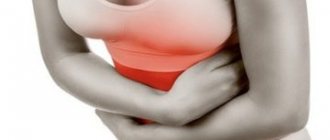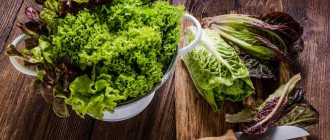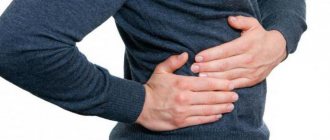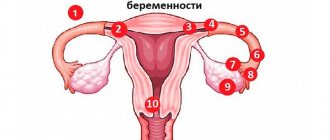Abdominal pain below the navel, causes of abdominal pain
Painful symptoms in any corner of the body are a sign of one or another deviation in its work, from one-time failures to serious pathologies. Painful symptoms, abdominal pain near the navel, are a fairly common sign that can indicate many diseases, including those that are fatal to humans. Considering the variety of deviations indicated by such ailment, when severe pain appears in the abdomen to the left, to the right of the navel, below or at the top of the navel, it is impossible to establish the exact causes of abdominal pain and make an accurate diagnosis without the help of a qualified specialist. Even one examination of the patient by a doctor is often not enough, and additional diagnostic procedures are required to obtain an accurate result. At the same time, knowledge about various pathological symptoms helps to form a preliminary idea of the severity of the disease.
Acute intestinal infections as the main cause of pain
A common cause of pain around the navel is the development of an intestinal infection that affects the mucous membrane of the small intestine. In this case, acute enteritis of infectious origin is observed. The causative agents of this pathology are various bacteria, protozoan microorganisms, viruses, and sometimes fungi.
The group of acute intestinal infections includes many diseases that develop with a variety of symptoms. In addition to painful sensations in the abdomen, vomiting, increased body temperature, nausea, and diarrhea may occur.
Staphylococcal gastroenteritis
The disease manifests itself after consuming low-quality confectionery products.
Staphylococcal gastroenteritis is accompanied by abdominal pain, nausea, severe vomiting, and sometimes fever.
Symptoms of the disease usually appear suddenly and disappear fairly quickly. Often you don't need to take any action to do this.
Salmonellosis
Salmonellosis is provoked by certain pathogens that reach a healthy person in the following ways:
- infected animals;
- sick people;
- after drinking contaminated water or food.
Salmonellosis is accompanied by characteristic symptoms, which include fever, nausea and vomiting, abdominal pain, and diarrhea. This disease can be mild and can be treated at home. In more severe cases, the patient is placed in a hospital, where the serious consequences of dehydration are prevented.
If salmonellosis is suspected in a child, it is necessary to provide him with qualified medical care as quickly as possible. His condition may deteriorate greatly within a few hours.
Cholera
The main symptom is cutting and incessant pain in the navel area. At the same time, frequent watery stools and vomiting are observed. Cholera is dangerous due to rapid dehydration of the body, which leads to hypovolemic shock and even death.
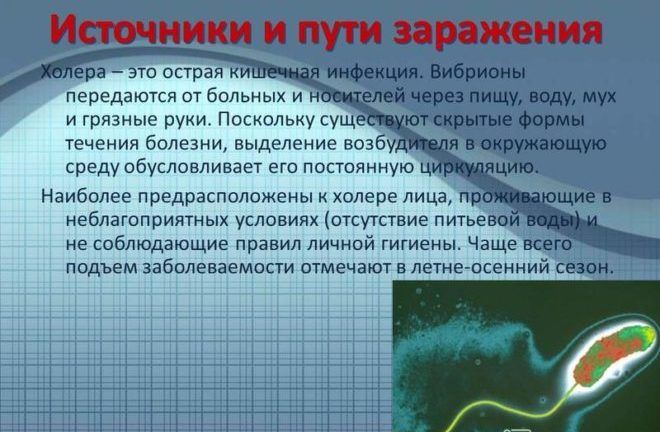
Pseudotuberculosis
Pseudotuberculosis is accompanied by inflammation of the small intestinal mucosa, liver damage, fever, symptoms of intoxication, and rheumatism. Very often, with the development of this disease, a scarlet-like rash appears in the form of small spots.
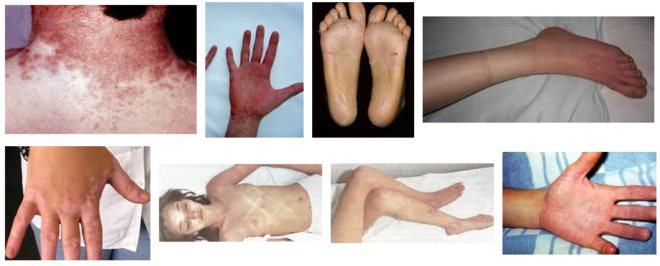
Rotavirus infection
Rotavirus infection is also called intestinal flu. As it develops, severe pain appears in the abdominal area, vomiting and loose, foamy stools with a sour odor. Similar symptoms are characteristic of other viral gastroenteritis.
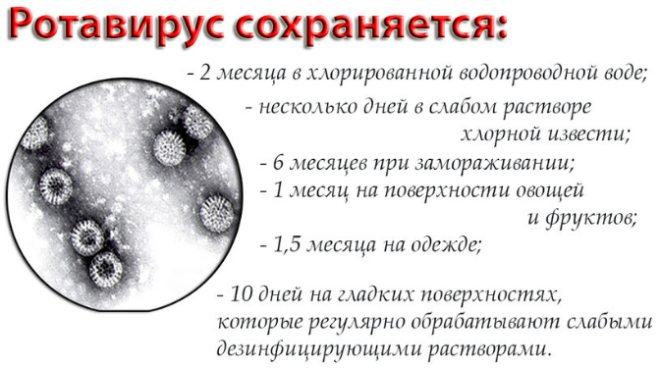
Enterovirus infection
Enterovirus infection is caused by various strains of the Coxsackie virus and ECHO. This disease is characterized by the following symptoms:
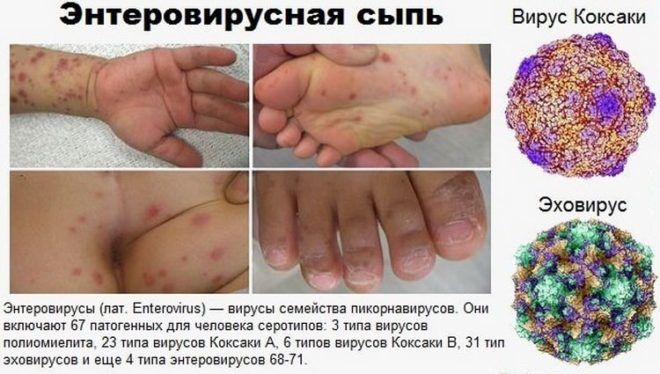
Enteroviral rash
- stomach pain in the navel area;
- body temperature rises rapidly;
- nausea, vomiting, diarrhea appears;
- symptoms of sore throat and stomatitis develop;
- a rash appears on the skin;
- a person feels a loss of strength and may complain of headaches.
Enterovirus infection is dangerous due to its complications. Without proper treatment, it can lead to meningitis, encephalitis, paralysis, and provoke serious heart pathologies.
Aching, nagging pain near the navel, sharp, stabbing pain near the navel, causes
Around the navel there are several organs belonging to different systems, deviations in the functioning of which cause pain. Abdominal pain can be true and radiating, that is, displaced from the source of the disease located in another part of the abdomen.
Every disease has its own specific abdominal pain. Their varieties will be discussed below.
1 Aching pain in the abdomen in the navel area. Occurs with intestinal obstruction, increased gas formation, chronic enteritis, formation of nodes and tumors. It also occurs in diseases of the genitourinary system and in pregnant women as a result of sprained muscles and ligaments of the abdomen.
2 Acute pain in the abdomen near the navel. Signals about ulcerative processes in the intestines or abnormalities in the functioning of the gallbladder, with an umbilical hernia. If the pain that appears here radiates towards the lower back with the urge to urinate, it means the movement of kidney stones.
3 Nagging pain in the abdomen near the navel. Often observed during pregnancy, intestinal obstruction and genitourinary ailments.
4 Stitching or cutting pain in the abdomen near the navel. Indicates acute appendicitis, cholecystitis, pancreatitis. In women, it signals problems with the reproductive system. Colic of this nature also appears in the case of diseases of the digestive tract.
With an umbilical hernia, it occurs when pressure is applied to the place of pinching, and is accompanied by severe nausea, flatulence and diarrhea. A preliminary external examination shows a protrusion of the navel; upon palpation, a compaction is felt; pressure increases the pain. Cutting colic with nausea also indicates an attack of acute appendicitis. They become more noticeable when you press on the lower abdomen on the right.
5 Severe pain in the abdomen near the navel. May signal volvulus, acute appendicitis, umbilical hernia or cancer.
Less often, such severe abdominal pain occurs in children with exacerbation of hereditary abdominal migraine. With this diagnosis, pain accompanies the patient constantly and is repeated in attacks, supplemented by nausea, bloating and constipation. Over time, it intensifies and moves higher, closer to the stomach. Severe pain with loss of appetite, heaviness and belching occurs in a person suffering from gastritis. Acute infectious infections, irritable bowel syndrome and impaired blood flow in the mesenteric vessels occur with similar symptoms. With an umbilical hernia, such pain makes itself felt after lifting heavy objects, and in women who have recently had childbirth - in case of stretching of the abdominal wall.
Causes of navel pain and nausea
If pain appears, it always indicates some kind of malfunction. This means that it is important to correctly determine the cause of the unpleasant phenomenon and provide quality treatment. In some cases, pain in the navel area may be associated with diseases that require emergency medical attention or even surgery.
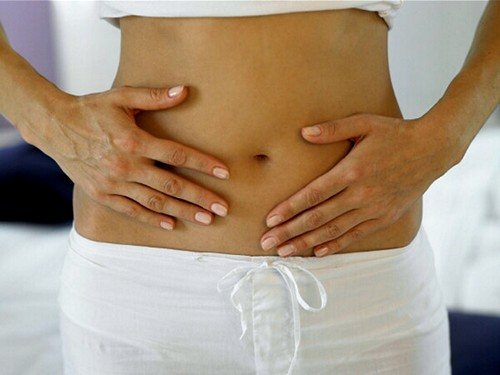
The most common causes of nausea and pain in the umbilical area include the following:
- appendicitis;
- diverticulosis;
- other diseases of the gastrointestinal tract;
- umbilical hernia.
If any of the above diseases occur, medical consultation is essential.
Appendicitis
When patients come to the hospital with complaints of acute pain in the navel area, specialists rush to find out whether there is appendicitis. Usually this disease can be diagnosed immediately after a medical consultation, but in rare cases, identifying the disease is complicated.
If your stomach hurts, this does not mean you have appendicitis. The disease is usually accompanied by the following symptoms:
- sharp pain in the navel area, localized closer to the right side of the abdomen;
- upon palpation, unpleasant sensations increase sharply;
- body temperature rises;
- dry mouth appears;
- pulse quickens.
At the slightest suspicion of appendicitis, you should consult a doctor as soon as possible. When the patient's condition is very serious, it is important to immediately call an ambulance. If the appendix ruptures, it can even be fatal.
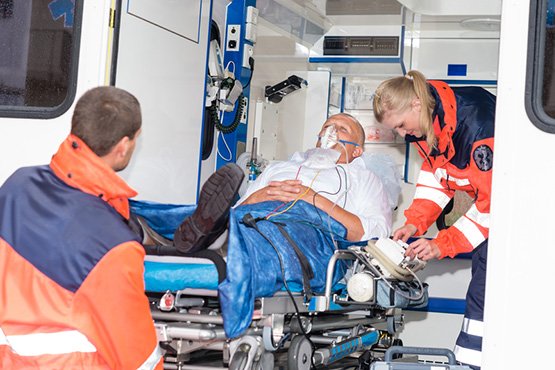
Divetriculosis
A rare disease that causes aching pain in the navel area. At the same time, he himself is visible from the outside and looks like an inflated bag. The condition is aggravated by the patient's high body temperature.
Other diseases of the gastrointestinal tract
By clearly distinguishing the symptoms that appear, you can determine the disease that you had to face. Thus, diseases accompanied by nausea, vomiting and pain include the following:
- chronic enteritis;
- intestinal dyskinesia;
- volvulus;
- small intestine cancer.
Chronic enteritis is an inflammatory disease that affects the small intestine and has pronounced symptoms. The disease is accompanied by mild aching pain and heaviness after eating. The person loses his appetite and begins to experience increased bloating.
With dyskinesia, pain may appear above the navel. In addition to nausea and vomiting, diarrhea often occurs, accompanied by weakness and pale skin. This disease often occurs in children. The condition is usually aggravated by severe headaches.
When intestinal volvulus occurs, the following symptoms may appear:
- stitching pain in the navel area;
- cutting sensations moving to the right side of the abdomen;
- spasms;
- nausea and vomiting;
- increased gas formation.
During an in-person examination by a specialist, the asymmetry of the abdomen and its excessive elasticity are noticeable. After attacks of pain, a bursting sensation may remain. The attacks themselves sometimes last up to 15 minutes.
Oncological tumors in the small intestine can also be accompanied by symptoms such as vomiting and nausea, complete loss of appetite. There is a noticeable weight loss. Diagnosis and treatment are possible only after a thorough examination of the patient.
Umbilical hernia
The navel may hurt when an umbilical hernia develops. When palpating in this case, it is easy to feel a small formation. Sometimes it is even noticeable to the naked eye.
An umbilical hernia is accompanied by the following symptoms:
- nausea and vomiting;
- pathologically increased gas formation;
- stool disorders.
You should not try to fight the disease alone. The best thing to do is to immediately contact specialists for help.
What other causes could there be of abdominal pain near the navel?
- acute obstruction of the small intestine, volvulus, adhesions, advancement of gallstones and tumors;
- acute and chronic circulatory dysfunction in mesenteric vessels caused by pressure from tumors or thrombotic blockage;
- prolonged inflammatory process in the small intestine (chronic jejunitis) due to metabolic failure, immunodeficiency, unbalanced nutrition, chronic hepatitis;
— enzyme deficiency and subsequent insufficient parietal digestion;
— oncological diseases;
- irritable bowel syndrome.
On right
The right kidney, part of the large intestine, and appendix are located in this area. The following serious diseases can cause pain in their projection:
- acute appendicitis;
- gastroduodenitis;
- inflammatory process in the colon;
- pyelonephritis;
- prolapse of the kidneys.
The main cause of pain in the navel area on the left is diseases of the small intestine. Also in this projection are the ureter, intestinal loops and omentum. A general list of causes of pain to the left of the navel includes:
- gastroduodenitis;
- inflammatory processes in the lungs;
- irritable bowel syndrome;
- sigmoiditis;
- ischemic or ulcerative colitis;
- inflammation of the mesenteric lymph nodes;
- bowel cancer;
- inflammation of the ovary;
- endometriosis;
- uterine fibroid;
- ectopic pregnancy;
- left-sided ovarian cyst.
Below the navel
Localization of pain below the navel is associated with intestinal diseases. A common cause is inflammation of the small intestine. Other factors that provoke the appearance of this symptom:
- irritable bowel syndrome;
- jeunitis;
- lack of jejunal patency;
- umbilical hernia;
- circulatory disorders of the mesenteric vessels;
- enzyme deficiency;
- diverticulosis of the sigmoid colon;
- gastrointestinal cancers;
- acute pyelonephritis;
- cystitis;
- period of menstruation.
An increase in temperature indicates the development of an inflammatory process in the body. Against the background of pain in the navel area, this symptom may indicate the following diseases:
- pancreatitis;
- inflammation of the appendages;
- follicle rupture;
- cholecystitis;
- peritonitis;
- stomach ulcer;
- problems with the ovaries.
When you press
The appearance of pain in the navel when pressing on it is associated with diseases of the rectum or genitourinary system of a woman. If such actions intensify the pain syndrome, then the cause may be:
- omphalitis;
- appendicitis;
- volvulus of the small intestine;
- diverticulosis;
- intestinal ulcer;
- abdominal migraine;
- umbilical hernia;
- adhesions in the peritoneum;
- thrombosis of mesenteric vessels;
- flatulence;
- aortic aneurysm.
Acute pain
Too sharp or sharp pain in the navel area in women appears due to more serious pathologies, such as volvulus, appendicitis or intestinal obstruction. The pain syndrome can be cramping or constant. Possible causes of the symptom:
- atherosclerosis of the vessels feeding the intestines;
- exacerbation of chronic enteritis or gastroenteritis;
- deformation of the mucous membrane under the abdominal cavity;
- irritable bowel syndrome;
- cystitis;
- intussusception;
- umbilical hernia;
- oncological diseases;
- inflammation of the sigmoid colon;
- attacks of appendicitis;
- intestinal dyskinesia;
- cholelithiasis;
- worms;
- cyst breakthrough;
- Crohn's disease.
After meal
The occurrence of pain after eating in most cases is caused by pathologies of the digestive tract. The main factors provoking this symptom are:
- diaphragmatic hernia;
- irritable bowel syndrome;
- dysbacteriosis;
- gastroduodenitis;
- gallbladder pathology;
- gastric obstruction;
- gallbladder pathology;
- pancreatitis;
- peptic ulcer;
- gastritis;
- esophageal stenosis;
- intolerance to certain foods.
During pregnancy
The main cause of pain in the navel area when carrying a child is the rapid growth of the fetus in the second half of pregnancy. As a woman's skin begins to stretch, this leads to discomfort. In this case, tension pain develops, which is not considered dangerous. Other physiological causes of this symptom in pregnant women:
- hormonal changes in the early stages;
- decreased intestinal motility in the second trimester;
- active movements of the child;
- polyhydramnios pregnancy;
- greatly gained weight.
Before childbirth, the navel may protrude outward, which also causes discomfort. Among the dangerous causes of pain in the center of the abdomen during pregnancy are:
- cystitis;
- umbilical hernia;
- intestinal infection;
- stomach pathologies;
- poisoning;
- placental abruption or damage to its blood vessels;
- pyelonephritis;
- acute appendicitis.
What diseases can there be if there is severe pain near the navel, how to determine the cause of abdominal pain?
1 If there is severe pain around the navel - with acute appendicitis or umbilical hernia.
2 If there is severe pain below the navel - Crohn's disease, enteritis, mesadenitis, endometriosis, diseases of the genitourinary system or large intestine.
3 Pain above the navel in adults and children – gastropathy, gastric or duodenal ulcer;
4 On the right side of the abdomen there is pain in the navel area - appendicitis, volvulus of the small intestine;
5 Pain appeared on the left side of the abdomen near the navel - accumulation of gases in the large intestine, pathology of the pancreas and spleen.
Periumbilical pain can be visceral, that is, provoked by spasms and sprains, or somatic, caused by irritation of the spinal nerves running through the abdominal cavity.
Distinctive features of pain near the navel of representatives of different ages and genders
Pain localized near the navel is most common among women. This is explained by the fact that representatives of the fairer sex more often suffer from disorders of the urinary and reproductive systems. Unpleasant sensations in most cases occur under the influence of cystitis, endometriosis and inflammatory processes in the pelvic organs, fibroids and uterine cancer. Pain near the navel in children is the result of rapid development of organs and other elements of the digestive system or poor nutrition. In children, unlike adults, in such cases the limbs turn pale and become colder than the rest of the body. These symptoms are present with volvulus, which, if delayed with medical attention, can have the most severe consequences, including death.
Colic near the navel in infants occurs as a result of improper digestion and, as a rule, goes away on its own by the age of one and a half years. Similar pains in representatives of the stronger sex occur with megacolon disease and are supplemented by constipation and intoxication due to stagnation of feces. These disorders often lead to deterioration of respiratory function and heart function. Pain near the navel also accompanies diverticulosis, chronic prostatitis and urinary dysfunction. Pregnant women experience painful discomfort in the immediate vicinity of the navel due to weakening of the abdominal muscles and displacement of internal organs or slow intestinal motility.
Pain in the navel area
Abdominal pain of any location in an adult or child should cause concern.
The topographic center of this area is the navel. If your stomach hurts in the navel area, then this symptom is taken into account in the diagnosis to identify the cause. The innervation of the organs located in the middle of the abdomen is provided by the solar plexus nodes, celiac and vagus nerves. At the same time, the branches go to the liver, gall bladder, stomach, and pancreas lying on the upper right. Therefore, irradiation into the umbilical region often accompanies signs of their pathology.
The loops of the small intestine are located in the central zone; analysis of the causes of pain should begin with diseases that directly affect this part of the gastrointestinal tract.
Diagnostics, what to do if there is severe pain near the navel?
Any pain indicating pathological processes in the body is accompanied by additional symptoms, on the basis of which the doctor makes a preliminary diagnosis before receiving test results. Therefore, it is important to remember and then describe to doctors in as much detail as possible all the details associated with the deterioration of well-being. The main questions that need to be answered are the duration of the pain near the navel, its presence in only one place or movement/recoil (irradiation), the nature of its occurrence, the change in the localization of discomfort symptoms from the onset of the ailment to the examination. The first thing the doctor does is examine the patient and collect an anamnesis based on questioning the patient regarding the characteristics of pain. After this, the doctor decides on the need and types of other diagnostic measures: blood and stool tests, ultrasound, colonoscopy or irrigoscopy.
Umbilical hernia
A round or oblong dense formation near the navel that cannot be repositioned into the abdominal cavity (and trying to reposition it yourself is strictly prohibited, since you can thereby damage the strangulated intestine).
This disease is usually accompanied by sharp pain in the navel, nausea and vomiting, constipation, flatulence and increased heart rate.
If you notice similar symptoms, it is recommended to urgently call an ambulance for immediate hospitalization in a surgical hospital.
Delay in this situation is fraught with serious consequences (including necrosis (death) of the strangulated intestine).
Tablets and drugs for abdominal pain, which ones to choose?
To relieve the patient of painful symptoms, the following drugs are prescribed:
1 No-spa for abdominal pain. Used to prevent and eliminate spasms of smooth muscles of internal organs, tenesmus, spastic constipation, and acute ulcerative formations. Contraindications: hypersensitivity, hypertension, cardiogenic shock, liver or kidney failure.
2 Spasmalgon, if abdominal pain appears. Prescribed to suppress mild to moderate pain during stomach or intestinal colic and other ailments accompanied by spastic contractions of smooth muscles.
The drug should not be taken if there is intestinal obstruction, hypersensitivity, pathologies of the heart and blood vessels, etc.
3 Papaverine for the treatment of severe abdominal pain. Antispasmodic, necessary to weaken the tone of smooth muscles of any organ of the digestive system. Used for renal colic, cholecystitis, cholelithiasis, uterine tone during pregnancy.
It is not recommended for use by children under 6 months, the elderly, patients with hypersensitivity, or renal failure.
4 Phosphalugel and treatment of abdominal pain. It has a oxygen-neutralizing effect, envelops mucous membranes, and acts as a strong sorbent. Necessary for the treatment of gastritis and ulcerative processes in the stomach and duodenum, erosive processes in the digestive tract, duodenitis, pancreatitis, enterocolitis, heartburn, poisoning, etc.
In addition to hypersensitivity, contraindications to its use are chronic renal failure, hypophosphatemia and Alzheimer's disease.
5 Smecta, when used to treat pain in the area around the navel. A strong adsorbent drug used for various gastrointestinal disorders. Eliminates pain syndromes in the gastrointestinal tract due to poisoning, heartburn, bloating, acute and chronic diarrhea, and infectious infections.
Contraindications: intestinal obstruction, isomaltase-sucrase deficiency, individual intolerance.
6 Espumisan for the treatment of abdominal pain. Designed to relieve flatulence, dyspepsia, Roemheld syndrome. Widely used in diagnostic procedures when examining the abdominal cavity. It is strongly not recommended to use if you are highly sensitive to the active substance of the drug.
How to understand the nature of pain?
The doctor receives a description of the pain characteristics from the patient. Not everyone knows anatomy well, but even children can show themselves the most painful place. To find out why the stomach hurts in the navel area, you will have to answer questions about the intensity, radiation, time of pain, its connection with food intake, alcohol consumption, and heredity.
Sharp pain in the center of the abdomen indicates a condition that requires urgent action. An attack of a cramping nature can occur with biliary colic, strangulation of an umbilical hernia, urolithiasis, or perforation of an intestinal ulcer. Most often it spreads to the right hypochondrium, lower back, and groin.
As a rule, such abdominal pain around the navel can be associated with eating food and alcohol. They appear 2 hours or more after eating or at night after overeating heavy meat dishes, spicy seasonings, eating foods of questionable quality, and mushrooms.
Severe pain in the middle of the abdomen is a possible sign of impaired blood flow in the mesenteric vessels. It occurs more often in older people as a complication after myocardial infarction. Caused by ischemia or thromboembolism of the arteries, in childhood it is called “abdominal migraine”.
The intense nature is typical for a malignant tumor, strangulation of an umbilical hernia. Irradiates and gradually shifts to the epigastric region. Aching constant pain occurs with intestinal bloating (flatulence), partial obstruction, atony, tumor growth, chronic inflammation (enteritis).
Long-term pregnancy causes congestion in the pelvis, constipation, and a tendency to frequent urination. Pressure on the intestines disappears after childbirth. Reducing the volume of the abdomen in women leads to the restoration of normal functioning of organs.
Women in the 2nd-3rd trimester complain of a nagging pain around the navel. They depend on the stretching of the muscles and ligaments of the abdominal wall. More pronounced in primigravidas and in the absence of physical training.
Abdominal pain in the navel area is caused by increased intra-abdominal pressure. This mechanism occurs in patients with ascites (exudation of fluid due to cirrhosis of the liver), with a sharp rise in severity, and in coughing smokers.
When the pain is localized in the navel area, the doctor tries to feel the expanded muscle ring and the prolapse of the hernial sac when the patient strains. Observing a small child while crying allows you to visually identify an umbilical hernia.
Traditional methods for treating umbilical abdominal pain at home
Alternative medicine recipes are as effective as some pharmaceutical drugs. Their use in the fight against pain symptoms around the navel should be careful so that the body receives benefit from the treatment and not harm. Before using traditional recipes, you should consult your doctor. Among the most common remedies: a decoction of rowan fruits; infusion of herbal tea: horsetail, chamomile, rose petals, wormwood, dill, rose hips, dried herbs and calendula; infusion of fresh or dried gooseberries or blueberries; infusion of chamomile, yarrow and flaxseed. The appearance of pain near the navel requires a mandatory change in the patient’s diet and diet. Canned foods, smoked meats and marinades should be excluded from consumption. If after this the spasms do not stop, you need to seek help from a qualified specialist.
What to do if your stomach hurts?
If it hurts very often near the navel, then it is better to immediately seek help from specialists
If pain occurs in the umbilical area, you should consult a doctor to find out the exact causes of this phenomenon. This can be caused not only by problems with the intestines, but also indicate pathologies of the genitourinary system or the cardiovascular system.
Children who may misinterpret their complaints require special attention. The child is often unable to accurately indicate the location of painful sensations, which to some extent complicates diagnosis.
In other cases, behind the harmless pain near the navel, much more serious problems lie. If acute appendicitis, peritonitis, pinched umbilical hernia and some other diseases are suspected, emergency medical care is required. This will help preserve the patient’s health and life.




